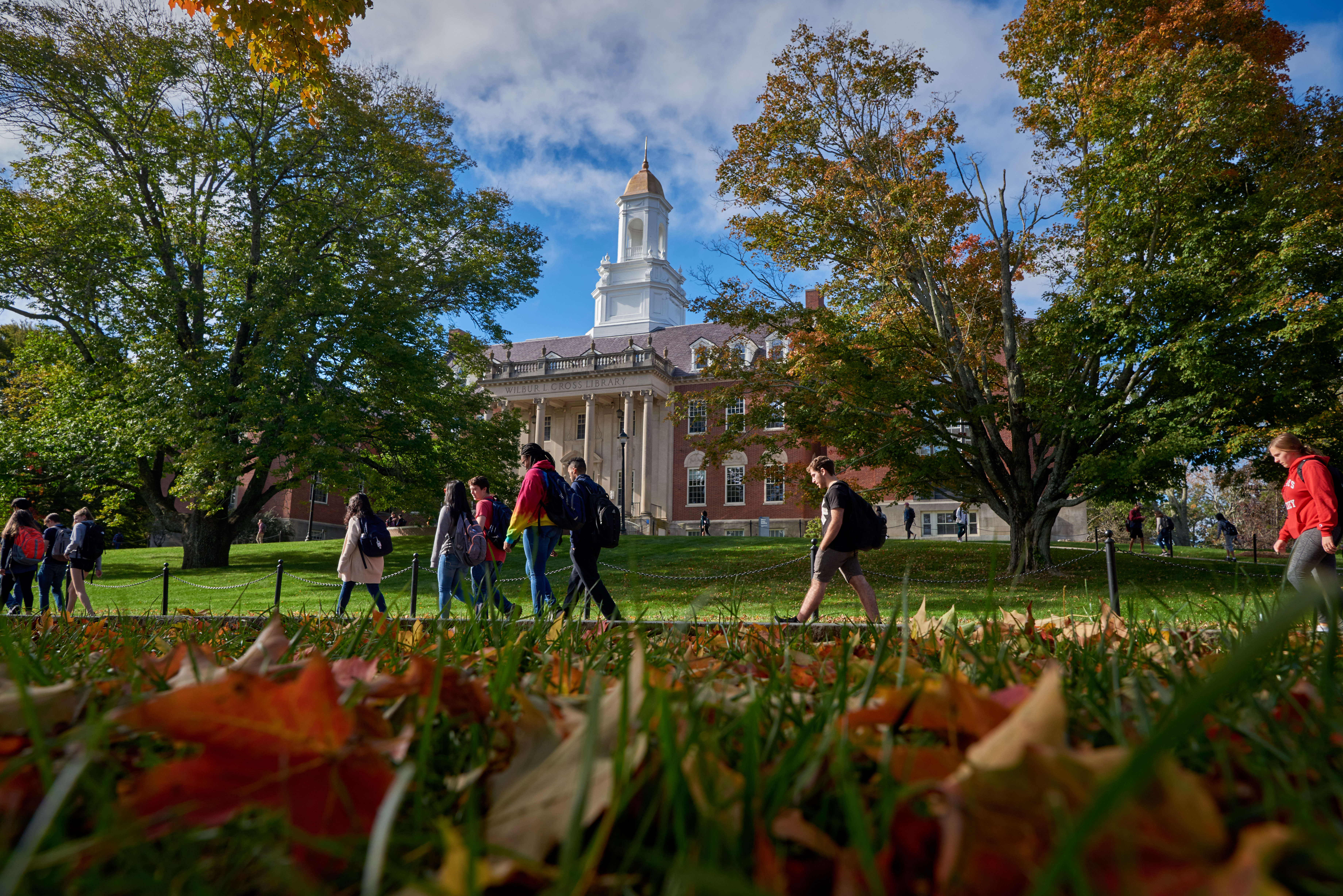The University of Connecticut is launching an initiative to connect talented students in certain Connecticut school districts with information on the many academic and financial resources available to them as potential UConn undergraduates.
The UConn Alliance Pathway was introduced Thursday, Feb. 4 by Gov. Ned Lamont and UConn President Thomas Katsouleas as the governor announced higher education initiatives developed to strengthen his Workforce Strategic Plan.
Under the UConn Alliance Pathway program, guidance counselors in 33 local and regional Connecticut school districts known as Alliance Districts will be asked to notify UConn starting in fall 2022 of students who start their senior year in the top 10% of their class, plus the top 10% of those whose family incomes qualify them for free or reduced-price meals.
The 33 districts comprise more than 200,000 students in more than 400 schools, including more than 14,300 high school seniors. Many of those seniors are high-achieving students with significant potential for college success, despite coming from traditionally underserved families or communities.
With the students’ consent, UConn will ensure they receive details about applying and the potential for being offered admission; the range of support available, such as access to in-person and virtual application events; how to submit application fee waivers; and other details.
“The Alliance Pathway will greatly enhance our ability to identify, recruit, and support these very talented and deserving students from across the state of Connecticut. We’re very excited for this initiative and to be part of the workforce development efforts under way statewide,” UConn President Thomas Katsouleas said Thursday.
UConn currently receives applications from nearly half of the students in the top 10% of their graduating classes in Alliance Districts, according to current data. The additional outreach will help inform others and hopefully encourage more of those students to apply, particularly as they learn more about the potential for receiving financial aid, the breadth of academic and social programs, and other aspects of UConn life.
It also would help UConn continue to draw broadly from the economic, ethnic, racial, and geographic backgrounds of the state’s citizenry – all of which helps build a strong and diverse workforce now and well into the future.
Many students in Alliance Districts are poised to become the first generation in their families to attend higher education. They also may comprise underrepresented racial and ethnic minority populations, or come from low-income families and be unaware of the academic and financial aid opportunities for which they could qualify at UConn.
“Identifying these students will allow us to intentionally guide them through the application process while informing them of their likely outcome of admission – based on historical figures – and communicating the range of support opportunities available to them in their college search process,” Nathan Fuerst, UConn’s vice president for enrollment planning and management, wrote Thursday to guidance counselors in the Alliance Districts.
“Together, through the UConn Alliance Pathway, we can transform the educational experiences and outcomes for these traditionally underserved scholars,” he wrote.
The Alliance Pathway announcement was one of several initiatives that Lamont unveiled Thursday to increase postsecondary enrollment and success across Connecticut for traditionally underrepresented and underserved populations.
“Increasing postsecondary enrollment and success, particularly among first-generation, low-income, and minority students, is good for students and is good for our state’s economy,” Lamont said.
“We must prioritize postsecondary enrollment so that our students are earning degrees and credentials that get them into the workforce and contributing to Connecticut’s economy,” he said. “These students represent our future, and the stakes are too high if we do not act now to mitigate these losses even further.”



